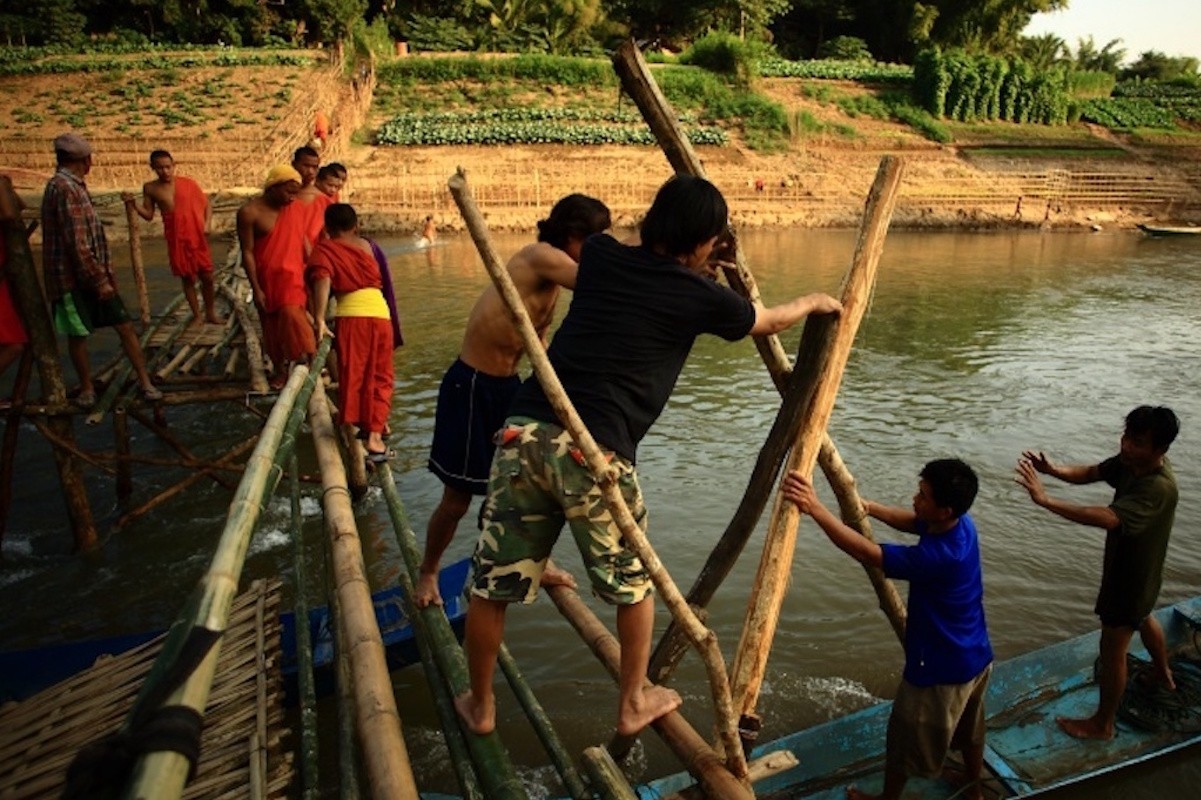The Mekong River Commission’s (MRC) 3rd summit of its 23-year history concluded yesterday with release of the Siam Reap Declaration. Coverage of the meeting’s value, and the declaration itself, ranged from questionable (Mekong Leaders Mostly Mum on Risks Tied to Intense Damming – VOA) to cautiously optimistic (Siem Reap Declaration Charts New Future for MRC – Phnom Penh Post).
The challenges of hydropower dams was indeed the main theme leading into the summit, summarized well by Mekong River’s Fate Up for Grabs in Cambodia – Asia Times.
The critical news came during the two-day International Conference proceeding the ministerial meetings. There, science took center stage, with discussion of the recently released, 3,600-page, MRC Council Study. The Nation encapsulated it well, with accompanying infographic, noting that hydropower development on the Mekong River will cost the basin US$28 billion in GDP losses, aggravate food insecurity and poverty, and reverse Sustainable Development Goals (SDGs).
As reported by VOA and Nikkei Asian Review, the specific findings of the impacts of hydropower development contained in the MRC’s Council Study were not directly addressed by the ministers when they convened later in the week. Their declaration, however, did stress the need to “consider comprehensive scientific findings.”
The MRC’s consideration of knowledge, and acting on it, are quite different noted International Rivers in its statement yesterday, and reported by Radio Free Asia: Mekong River Commission Warned on Development Impacts to the River.
Talking with The Mekong Eye Friday, IR’s Pianporn Deetes stated that leaders of Mekong’s countries have never been interested in what civil society nor science tells us about the decline in well-being of the basin’s ecology or people dependent upon it, now nor in the future. “As a native of the basin, I’m deeply saddened that these leaders are incapable of seeing the whole river, they simply want to divide it into sections from which they can exploit. We are watching this social and ecological disaster unfold before our eyes,” Pianporn says.
Her concerns appear warranted. Declaration language from the two previous MRC summits in 2010 and 2014 contain similar written commitments, seeding doubt about the likelihood the words will foster much action by the time the MRC summits next, four years from now in Laos.
The need for some basic MRC reforms also received attention, as in this commentary in the Khmer Times (Code of Conduct for the Mekong) and by Phnom Penh Post’s coverage of Prime Minister Hun Sen’s remarks (New Directions for the Mekong). The Phnom Penh Post also published an opinion by Lilian Mercado, regional director for Oxfam in Asia: Women Key to Mekong’s Future and Prosperity.
Lastly, though only a “Dialogue Partner” within the MRC’s structure, China’s influence was nonetheless a key topic as covered by VOA (Analyst: The Mekong is a Chance for China to Improve Its Soft Power Footprint) and Future Directions International (China and the Mekong River: Dominance or Collaboration?). As the summit unfolded, China responded in kind (China’s Sway Clear at Mekong Summit – Phnom Penh Post and Mekong River Conference Hears of Determination to Work with LMC – The Nation).
(Updated April 9th to include additional coverage)





